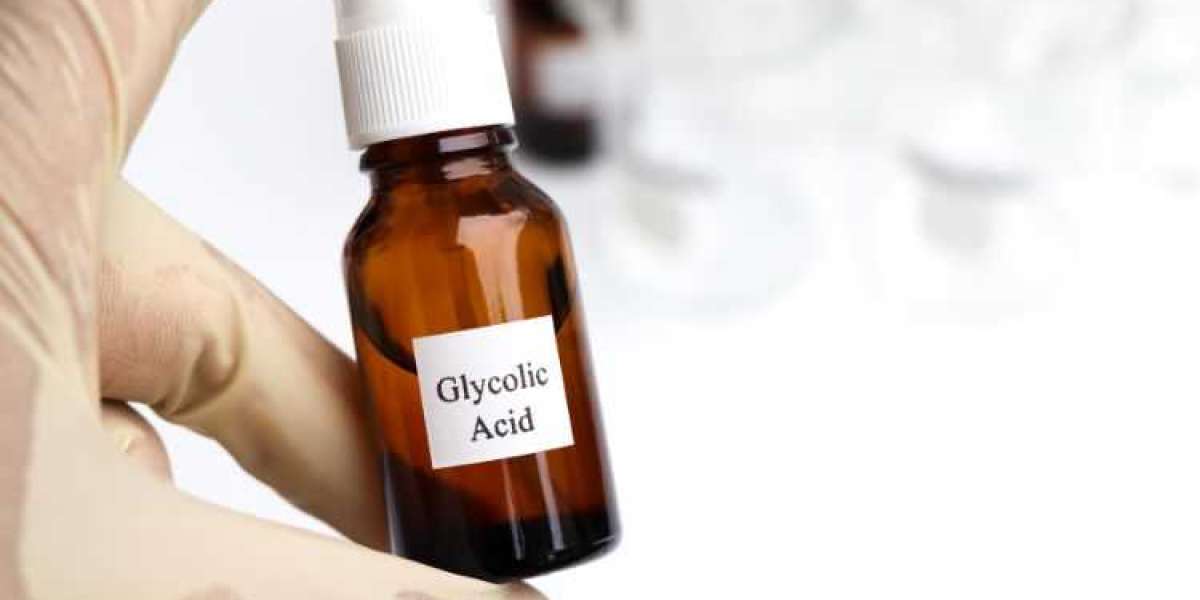The global glycolic acid market size attained a value of approximately USD 350.87 million in 2023. This impressive figure reflects the growing popularity of this powerful skincare ingredient. The market is further expected to experience significant growth, reaching a projected value of USD 652.92 million by 2032, with a compound annual growth rate (CAGR) of 7.1%. But what exactly is driving this surge in demand for glycolic acid?
This blog post dives deep into the world of glycolic acid, exploring its properties, the multitude of benefits it offers for the skin, and how to incorporate it safely and effectively into your skincare routine.
What is Glycolic Acid?
Glycolic acid is an alpha hydroxy acid (AHA) – a type of chemical exfoliant derived from natural sources like sugarcane and sugar beet juice. Due to its small molecular size, it has the unique ability to penetrate the deeper layers of the skin. There, it works its magic by loosening the bonds that hold dead skin cells together, promoting their removal and revealing a fresher, smoother complexion.
The use of glycolic acid in skincare isn't a new phenomenon. In fact, its history dates back to the sugar industry, where workers who handled sugarcane juice often noticed smoother hands – a testament to the exfoliating properties of the acid. Thankfully, modern science has harnessed these benefits, allowing us to reap the rewards of glycolic acid in a safe and controlled manner.
Benefits of Glycolic Acid for Radiant Skin
The impressive growth of the Glycolic Acid Market is a direct result of the numerous benefits it offers for various skin concerns. Here's a closer look at some of the key advantages:
Exfoliation Powerhouse: Glycolic acid excels at removing dead skin cells that can clog pores, dull the complexion, and contribute to uneven texture. By promoting cell turnover, it reveals a brighter, smoother, and more radiant appearance.
Skin Rejuvenation: As we age, collagen production slows down, leading to wrinkles and loss of skin elasticity. Glycolic acid plays a role in stimulating collagen synthesis, promoting a plumper and more youthful appearance.
Hyperpigmentation Hero: Sun damage, acne scars, and other factors can lead to hyperpigmentation, causing dark spots and uneven skin tone. Glycolic acid helps fade these spots by encouraging the shedding of hyperpigmented cells, revealing a more even complexion.
Acne Buster: Struggling with breakouts? Glycolic acid comes to the rescue! It helps keep pores clear by dissolving dead skin cells and sebum buildup that can contribute to acne formation. Additionally, its anti-inflammatory properties can soothe existing breakouts.
Moisture Master: Glycolic acid not only promotes cell turnover but also helps the skin retain moisture more effectively. This results in a more hydrated, healthy-looking complexion.
Unlocking the Power of Glycolic Acid: How to Use It Wisely
Now that you understand the fantastic benefits of glycolic acid, let's explore how to incorporate it seamlessly into your skincare routine. Here are some key factors to consider:
Choosing the Right Concentration: Glycolic acid comes in various concentrations, ranging from as low as 5% to as high as 20%. For first-time users, it's best to start with a lower concentration (5-10%) to minimize potential irritation. You can gradually increase the strength as your skin gets accustomed to the product.
Frequency of Use: Introduce glycolic acid into your routine gradually, starting with once or twice a week. As your skin adjusts, you can increase usage to a maximum of three times a week. Remember, consistency is key!
Application Methods: Glycolic acid can be found in various skincare products like cleansers, toners, serums, and creams. Choose the format that best suits your skin type and preference. Generally, serums offer higher concentrations compared to cleansers or toners and provide a more targeted treatment.
Potential Side Effects and Minimizing Them: As a chemical exfoliant, glycolic acid can cause dryness, irritation, and sun sensitivity, especially for beginners. To minimize these effects, follow these tips:
- Moisturize religiously: Counteract potential dryness with a gentle, fragrance-free moisturizer.
- Sun protection is essential: Since glycolic acid increases sun sensitivity, apply a broad-spectrum sunscreen with SPF 30 or higher daily, even on cloudy days.
- Patch Test: Before applying any new product, especially those containing glycolic acid, perform a patch test on a small area of your inner arm. Monitor for any signs of irritation for 24 hours before full application.
- Consult a Dermatologist: If you have any concerns, pre-existing skin conditions, or are unsure about the appropriate concentration, consult a dermatologist for personalized advice.
Building a Glycolic Acid-Powered Routine
Now you're equipped with the knowledge to integrate glycolic acid into your skincare routine! Here's a breakdown of how different formats can be incorporated:
Cleansers and Toners: These offer a gentle introduction to glycolic acid and are suitable for most skin types. Use them in the morning and evening as part of your cleansing routine.
Serums and Creams: These formulations offer a more concentrated dose of glycolic acid and are ideal for targeted concerns like hyperpigmentation or acne. Apply them after cleansing and toning, typically at night, to allow for skin cell regeneration.
Professional Treatments: Chemical peels containing glycolic acid are offered by dermatologists for a more intense exfoliation experience. These treatments can address deeper concerns like wrinkles and sun damage. However, professional consultations are crucial before undergoing such procedures.













